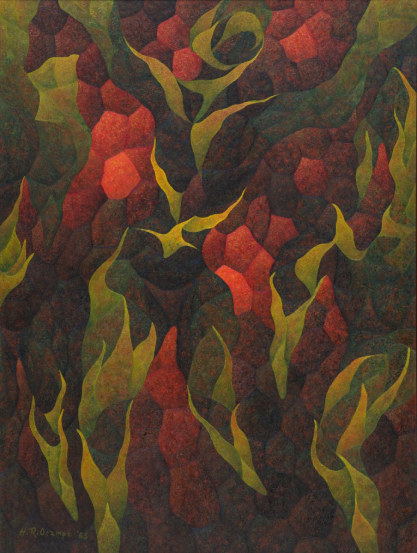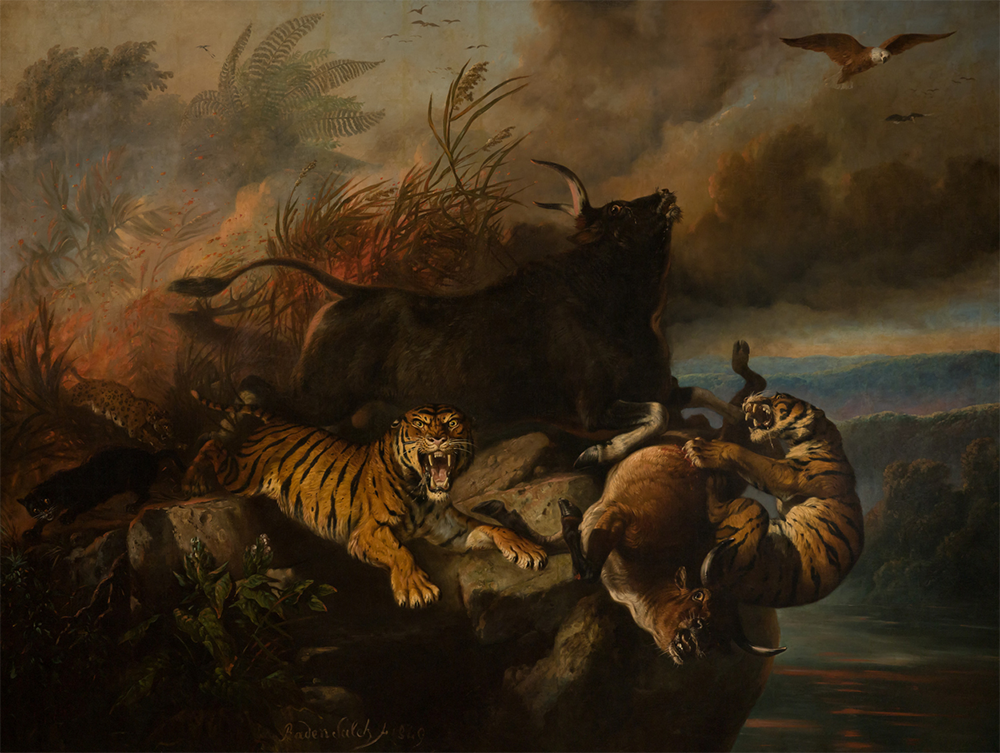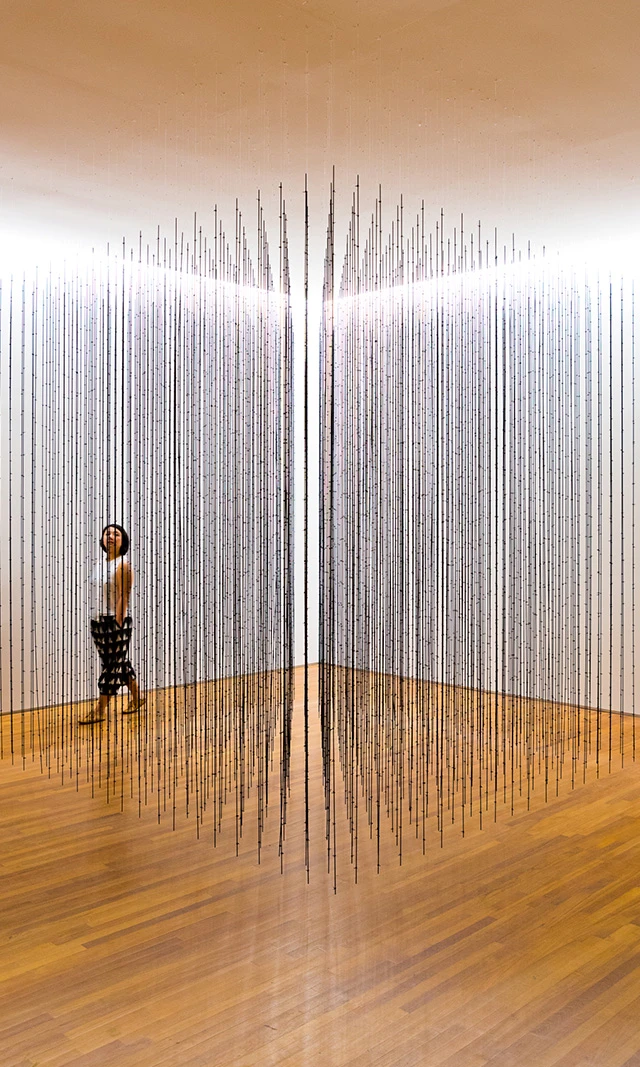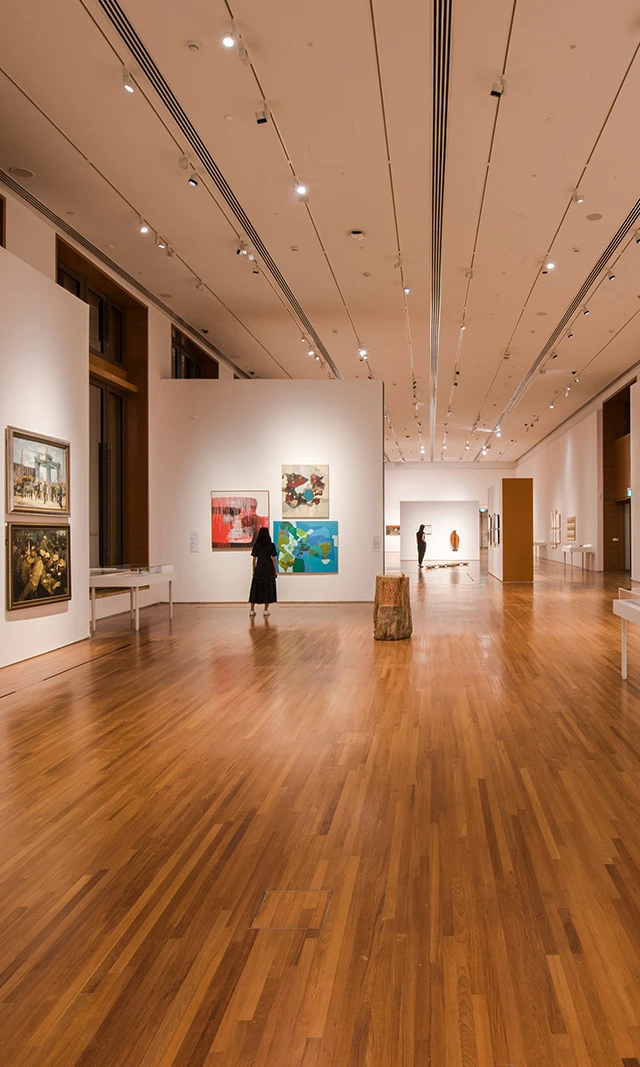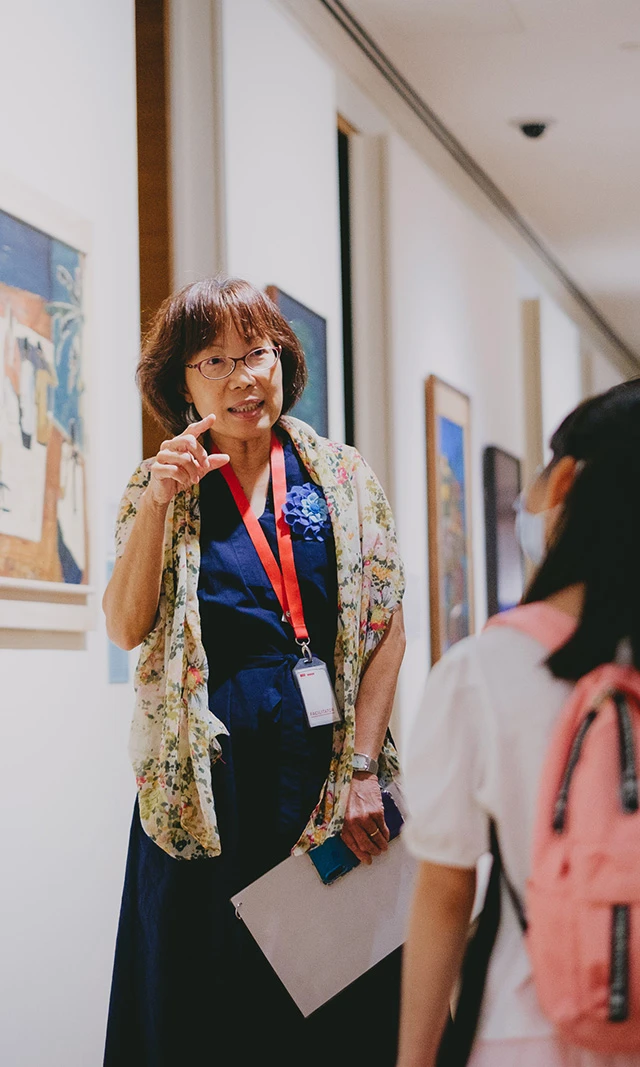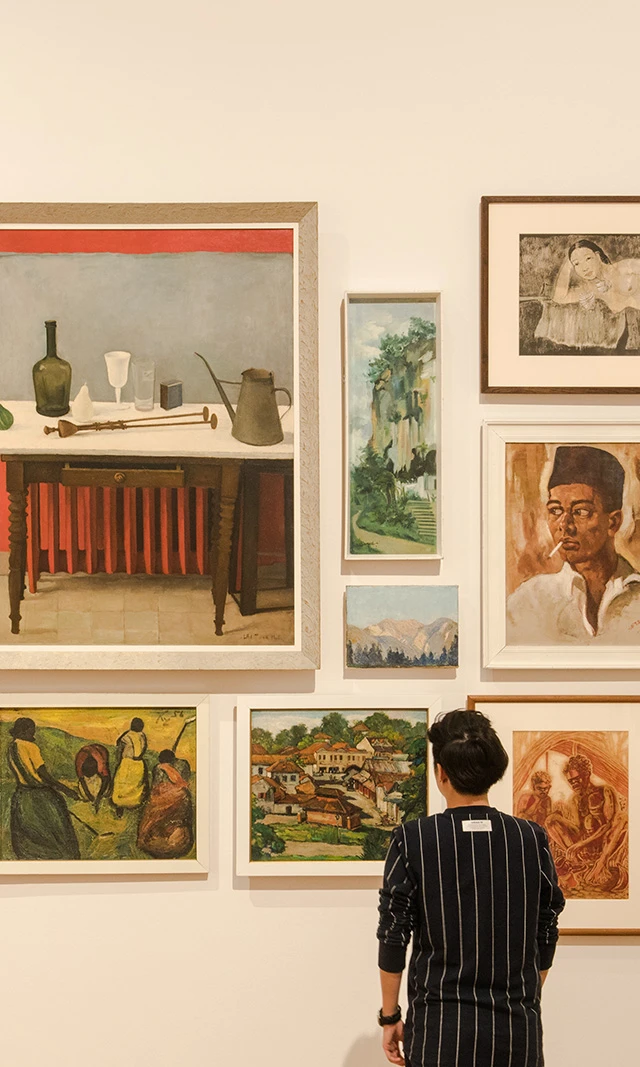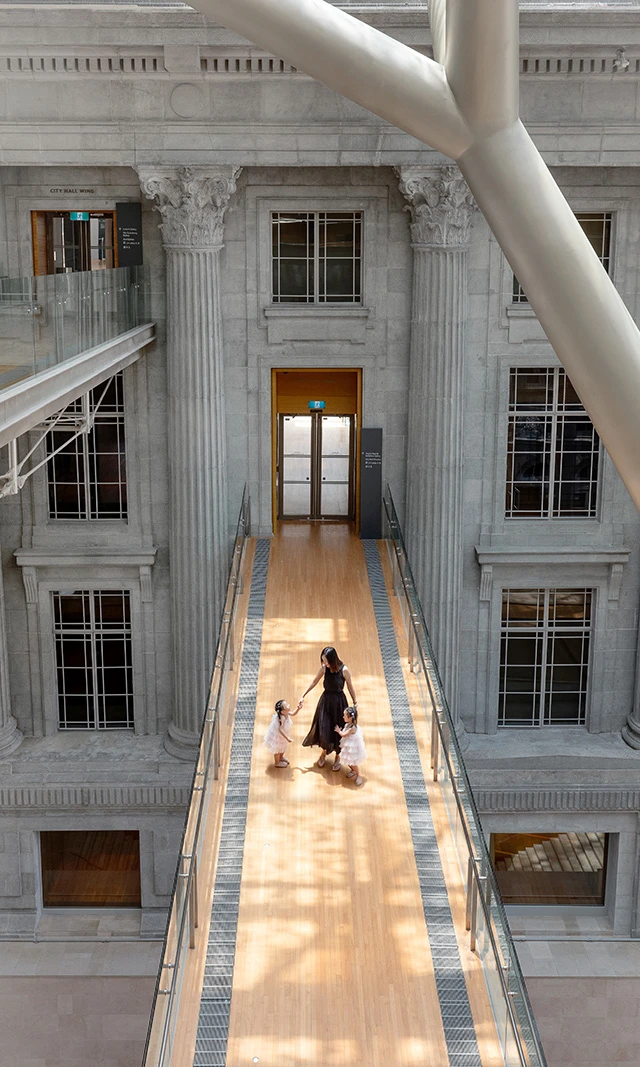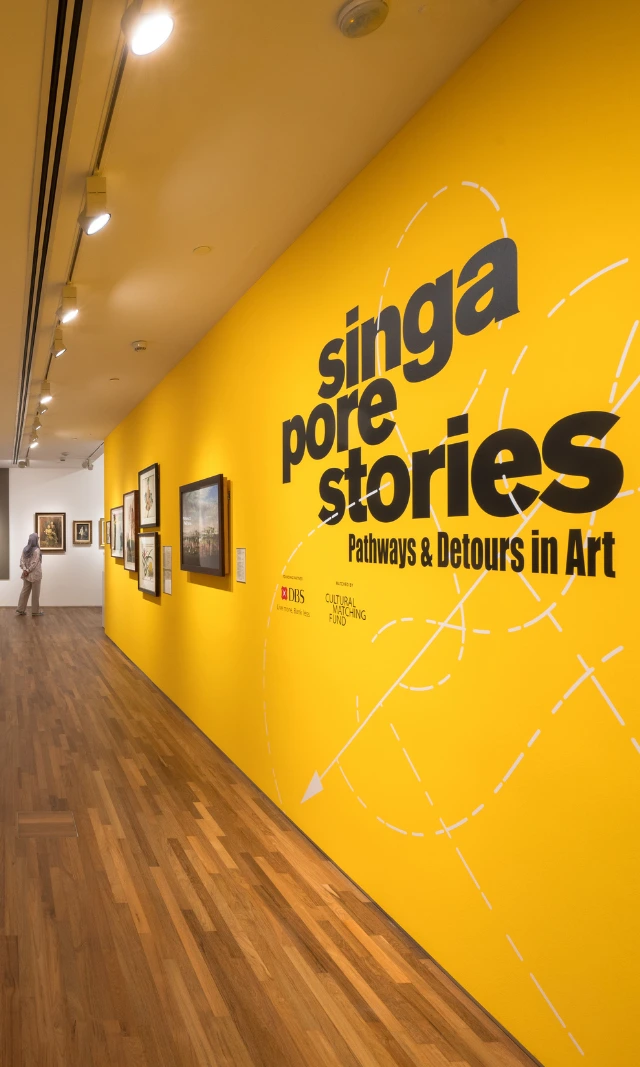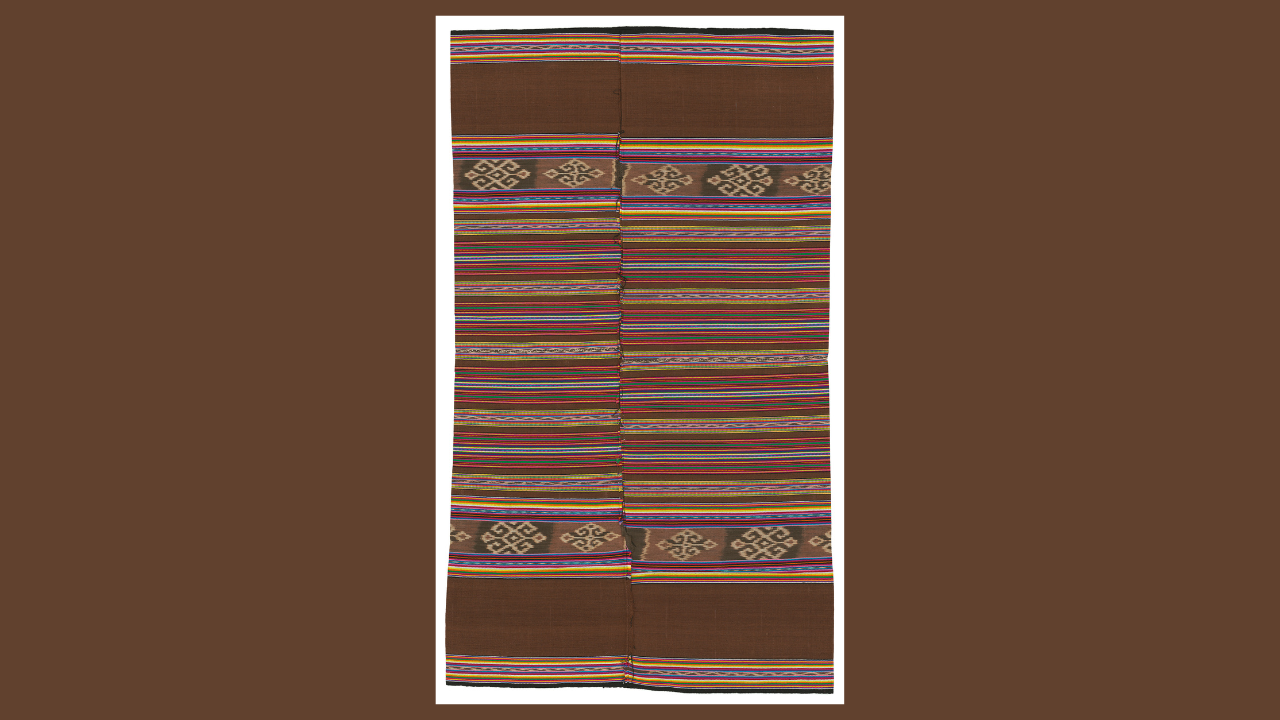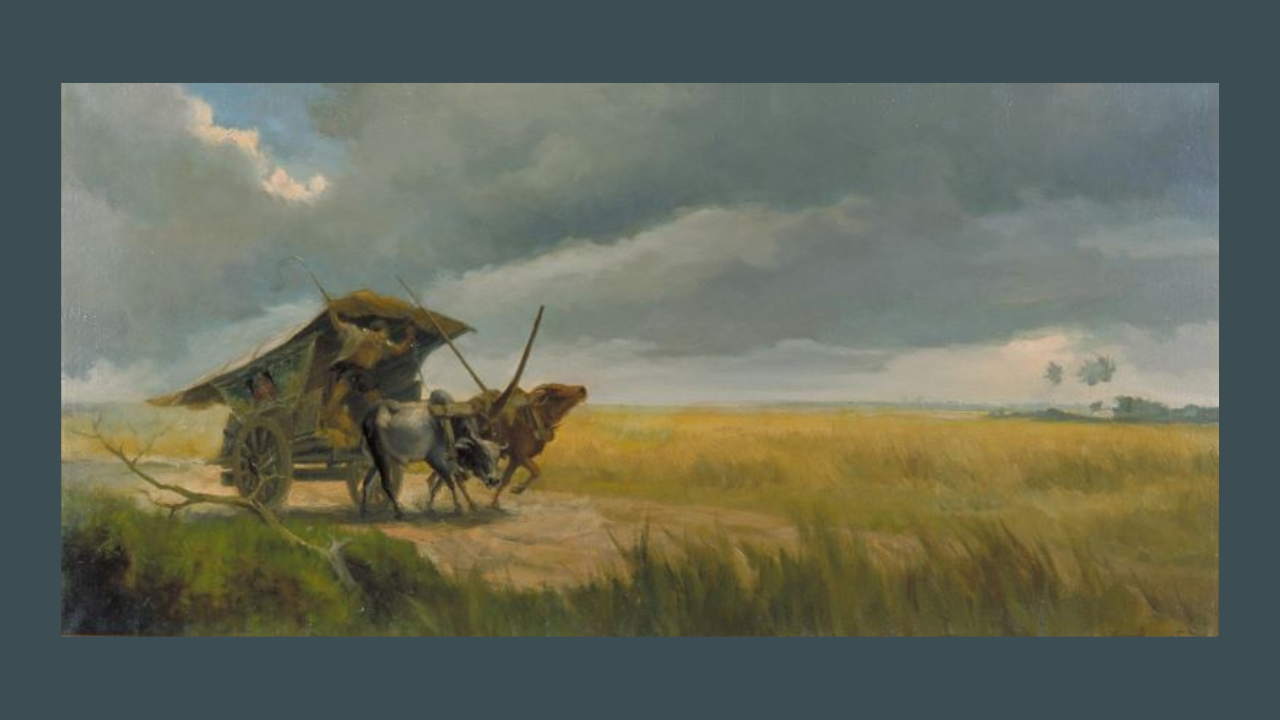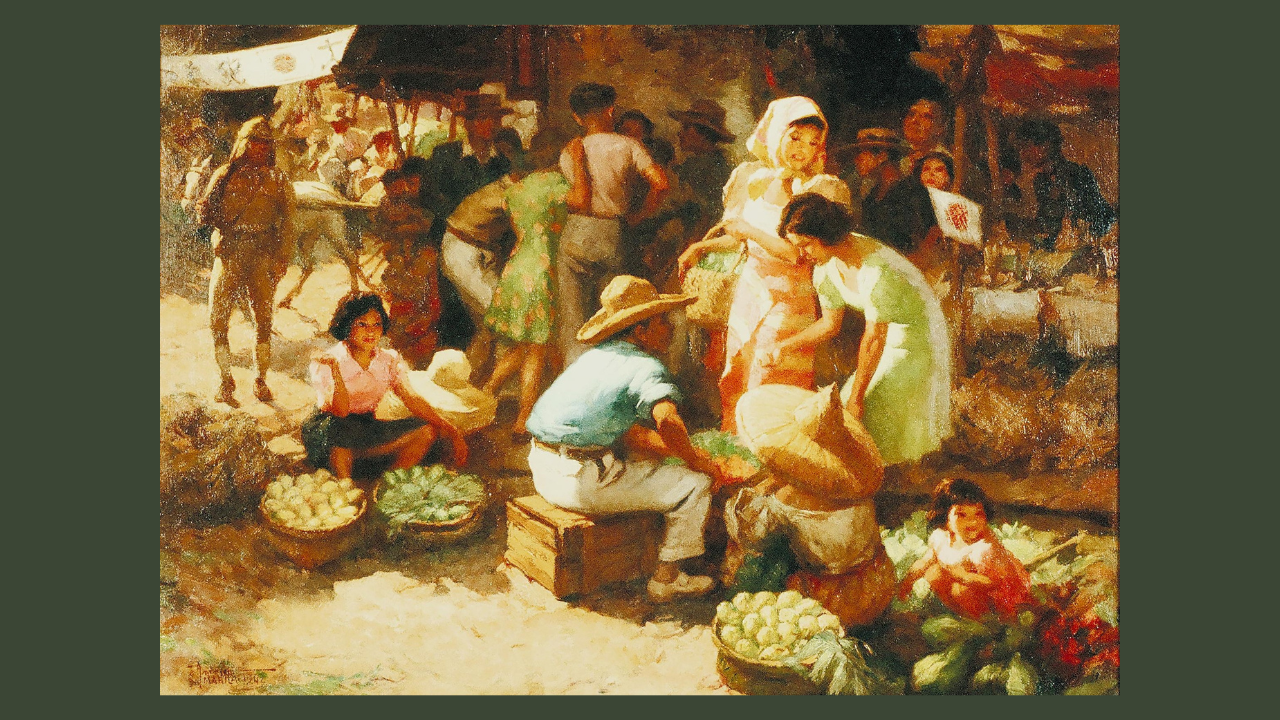Art x War: Stealing Raden Saleh: War and Art in Indonesia
Dr. Elly Kent’s essay discusses the ongoing fascination of artists and scholars alike with the enormous history painting, Penangkapan Pangeran Diponegoro (The Arrest of Prince Diponegoro) (1857) by Javanese painter, Raden Saleh (1811–1880).
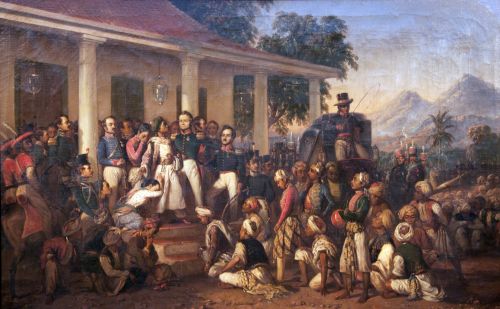
Raden Saleh (1811‒1880) is sometimes claimed as Indonesia’s first modern painter—or even, according to Werner Kraus, "the first modern Indonesian man,"1 although he died decades before the initiation of the first official nationalist movement, Budi Utomo. His painting Penangkapan Pangeran Diponegoro (The Arrest of Prince Diponegoro) depicts the event that marked the end of the of the Java war (1825‒1830), when a key leader of the rebellion, the aristocrat and aspiring Islamic spiritual leader, Diponegoro, was arrested by Dutch General De Kock after purported peace talks failed. Widely seen as a set-up culminating in betrayal, the narrative of Diponegoro’s demise—and his victories—has continued to resonate in political, religious and social realms as the Indonesian state evolves.
For some time, Saleh’s work was thought to be a rather clumsy copy of an earlier illustration by Nicolas Pienemann, which had been commissioned by General de Kock himself, but more recent scholarship shows how the painting appropriates and subverts Pienemann’s work. We can see how Saleh depicts Dutch figures with comically large heads and eschews including the Dutch flag, and observe that Saleh’s landscape more accurately reflects the Javanese environment, which Pienemann never visited.
Saleh’s painting—and Diponegoro’s story—has reappeared frequently throughout Indonesia’s history, deployed in the service of political, religious and moral causes, and appearing regularly in popular culture.
Posters designed by members of Seniman Indonesia Muda (Young Indonesian Artists), among Indonesia’s first generation of modernist painters, leveraged Diponegoro’s image to build morale in a people engaged in guerilla warfare against 20th century Dutch forces. His image has continued to appear in paintings and sculptures, particularly when Saleh’s painting was returned to Indonesia by the Dutch government in 1978.
In contrast to Saleh’s work, Sudjojono’s 1979 painting Pasukan Kita yang Dipimpin Pangeran Diponegoro depicts Dipenogoro’s victory in the 1826 Battle of Kejiwan. Kraus quotes Sudjojono as saying “I’m not of the opinion that a native painter, born from Indonesian soil, should paint one of our heroes at a time he was captured by the Dutch, in a state of inferiority and weakness.”2
Subsequently, the influence of Saleh’s painting and Diponegoro has gained complexity. While Bachtiar’s 1976 biography described Saleh as “un-nationalistic,”3 in 1996, Jim Supangkat considered Saleh’s patriotism beyond question; Alwi Sahab declared the artwork “revolutionary and anti-colonialist.” Saleh’s depiction of Diponegoro has also provided a rich seam for artists to address civil, political and military conflict in Indonesia.
Since the mid-1990s, Heri Dono’s work has delivered veiled and not-so-veiled critiques of Suharto’s machinery of power since the mid-1990s, even while the New Order’s powers to curtail and censor art production were at a peak. At least two of Dono’s artworks appropriate Raden Saleh’s painting, while a third appropriates Pienemann’s version of events.
Salah Tangkap Pangeran Diponegoro (2007) was created in the heady days of the first decade after the fall of Suharto. At this point, Indonesian artists in every field were keen to expose, lampoon, berate and denigrate the former regime, and in Salah Tangkap we see immediately recognisable caricatures of Suharto’s arrest rendered in Dono’s distinctive figurative style, devised to echo the two-dimensional characteristics of wayang shadow puppets. In Dipenogoro’s place, Suharto leans on a walking stick on the steps of the Magelang palace as a uniformed figure handcuffs him. Behind him is his faithful vice-president Habibie, who became the third president after Suharto resigned but did not contest the subsequent election. That election brought in Megawati who resembles, perhaps, the Semar figure seated on the ground with the medic. Diponegoro surveys the scene from the rooftop, watching over yet another slippery transfer of power. In his 2021 appropriation, Dono himself is atop the roof. Featuring realistic portraits of those embroiled in the 2016‒2017 blasphemy charges against former Jakarta Governor Basuki Tjahaja Purnama (Ahok), the painting departs from Dono’s earlier wayang style. Unmistakable here are leader of the once extremist and later mainstream FPI (Islamic Defenders Front) M. Rizieq bin Hussein Shihab, erstwhile President Joko Widodo, and then-Jakarta governor Anies Baswedan (among others), their heads awkwardly perched atop bodies whose postures closely mimic Saleh’s original.
Along with Dono’s Salah Tangkap, Eddy Susanto’s 2011 painting Collapse of Memory was exhibited in a 2015 exhibition curated by Kraus, Carey and Supangkat. The painting calls up futuristic technology, Javanese legends, and key cultural works from a plethora of sources. With ordinary lighting, viewers encounter a grainy, darkened version of Saleh’s Arrest of Diponegoro. Once the UV light is activated, a wailing figure is revealed, exposing a second appropriation of Francisco Goya’s The Third Of May 1808 (1814). Goya’s seminal painting, which depicts the summary execution of rebels who had on May 2nd resisted the French occupation of Spain, was lauded by art historian Kenneth Clark, as "the first great picture which can be called revolutionary in every sense of the word, in style, in subject, and in intention." Carla Bianpoen indicates that Susanto’s appropriation reflects Goya’s reputation as a “pioneer who broke through to realism,” and points to Saleh’s similar (albeit retrospectively applied) position as the pioneer of modern Indonesian painting.
In its time, Goya’s unconventional painting shocked the establishment with its brutal, non-heroic depiction of the anonymous rebels’ sacrifices. It was lauded by art historian Kenneth Clark, as "the first great picture which can be called revolutionary in every sense of the word, in style, in subject, and in intention.”4 Similarly, for many Indonesians Saleh’s depiction of Diponegoro’s arrest represents the ongoing burden of colonisation, land disputes and vertical conflict. But there are other similarities between Goya and Saleh’s political subjectivities. Saleh was court painter to the Dutch governor general in Java and to various European courts, including that of his Dutch patron King Willem III. Similarly, during the Peninsula War, Goya was a court painter for Joseph Bonaparte, who was installed by Napoleon as regent during the French occupation (1808‒1814). Both men served the colonisers of their own people, colonisers they purportedly criticised through their artworks; both also produced handsome portraits of their colonial masters. And, just as Picasso and Manet drew on Goya to express anti-war sentiment in Guernica (1937) and The Execution of Emperor Maximilian (1867‒1869), Indonesian artists continue to draw on Saleh’s depiction of De Kock’s betrayal of Diponegoro to critique past and present injustices.
Notes
1. Werner Kraus, "Raden Saleh's Interpretation of the Arrest of Diponegoro: an Example of Indonesian 'proto-nationalist' Modernism," Archipel 69, no. 1 (2005): 264.
2. Werner Kraus, “Diponegoro in the Mouth of Indonesian Art History: the Making of a Hero.” In A Prince for All Seasons: Diponegoro in the Memory of the Nation, from Raden Saleh to the Present (National Gallery of Indonesia, 2015), 16.
3. Harsja Bachtiar, "Raden Saleh : Aristocrat, Painter and Scientist", Madjalah Ilmu-Ilmu Sastra Indonesia 6, no. 3, (1976): 45. Quoted in Kraus, "Raden Saleh's Interpretation," 287.
4. Kenneth Clark, Looking at Pictures (Beacon Press, 1968). 130.
Further Reading
Bachtiar, Harsja. "Raden Saleh : Aristocrat, Painter and Scientist." Madjalah Ilmu-Ilmu Sastra Indonesia 6, no. 3 (1976).
Carey, Peter. “Raden Saleh, Dipanagara and the Painting of the Capture of Dipanagara at Magělang (28 March 1830)." Journal of the Malaysian Branch of the Royal Asiatic Society 55, no. 1 (242) (1982): 1–25. http://www.jstor.org/stable/41492909.
Carey, Peter, Jim Supangkat and Werner Kraus. “Diponegoro in the Mouth of Indonesian Art History: the Making of a Hero.” In A Prince for All Seasons: Diponegoro in the Memory of the Nation, from Raden Saleh to the Present. National Gallery of Indonesia, 2015.
Clark, Kenneth. Looking at Pictures. Beacon Press, 1968.
Kraus, Werner. Raden Saleh's Interpretation of the Arrest of Diponegoro: an Example of Indonesian" proto-nationalist" Modernism. Archipel 69, no. 1 (2005): 259–294.
Licht, Fred. Goya, the Origins of the Modern Temper in Art. Universe Books, 1979.
